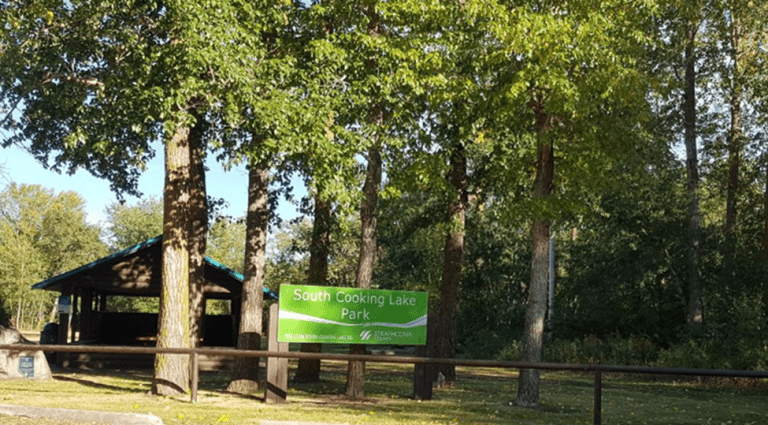- Controversial Photo radar is outlawed in some provinces, ambiguously allowed in others
- In 2020 the city of Edmonton’s photo radar system brought in almost $50 million in revenue.
- 40 % of Photo radar revenue is simply ‘taken’ by the Province.
- Reductionist logic equates ‘speed’ with safety at the exclusion of all other factors, in particular, driver experience, qualifications, and distractibility.
- The City of Edmonton’s traffic plan ( the explanation and justifications for use of photo radar among other things) specifically labels car transportation as inconsistent with principles of ‘equity’ and a justifiable target of ‘climate resilience’
- Why are massive LED signs with distracting bright colors and rotating messages allowed on major roadways?

Photo radar saves lives! The automated traffic fine system is justified and necessary, and the only thing that works. This is what is known as a ‘reductionist’ approach to traffic safety, where one takes a very complex system with many variables and relationships, and boils it down to a single factor, and asserts with assumed authority, that ‘this one thing’ (speed) is THE single mitigating factor.
This authority is enforced punitively for compliance. If you don’t pay, they won’t renew your license or registration, and you will not be able to work.
The level of fine is also no accident. At $ 113 (the fine for being 11 km over the limit) to protest one has to take time off work, pay for gas and parking downtown at the courthouse, which could already be a 100-to-200-dollar loss on the day, to contest a ticket you probably won’t win anyways unless you can clearly show evidence to the contrary.
There are two goals intended for the use of photo radar system and several hidden goals. One stated goal is public safety, another is a revenue stream. In Edmonton there appear to be two or three less obvious goals oddly related to ‘climate resilience’ and a very loosely and selectively defined notion of ‘equity’.
Would citizens/taxpayers/workers who are driving the ‘speed of traffic’ during morning commutes for several weeks agree that a $113 fine one random day for driving 11km over the speed limit is fair and justified in the name of public safety?
Actually, yes, they probably would IF it could be determined through open and transparent discourse that: First, photo radar at intersections convincingly reduced accidents at a particular location.
Secondly, it could be objectively demonstrated that there are no other variables which could also affect and reduce collision frequency.
Thirdly, and related, there are no other non ‘monetary-punitive’ measures which could deter speed and achieve better safety results, and finally, that the fines collected were fair and necessary and only served the stated goal of improving traffic safety.

I’d been commuting south on 50th street for 6 weeks this fall, driving by and large the ‘speed of traffic’, which is basically the user-regulated and largely safe zone set informally by drivers and commuters for a given road in given conditions.
However, I was technically speeding. Three is no denying that. The limit is 60 km/hr, and I was ticketed for travelling 71 and 72 km/hr. However, for myself and all the other basically responsible commuters travelling 50th street every day, this is the unpenalized norm. When suddenly this norm becomes a fine and penalty, there is an element of ‘entrapment’ to this arbitrary administration of justice.
In fact, a recent Court ruling in Quebec basically outlawed photo radar. Traffic safety is a Provincial matter, with a whole set of very grey conditions granting permission for Municipalities to administer them.
Some highlights from that decision by Justice Serge Cimon include, “The prosecution can consider this a formal notice that evidence used in fixed photo radar cases is insufficient.”
Cimon further noted that “A real person must provide evidence that the machine is in working order, and that there’s proper signage in the area. The Quebec decision called the current application of a photo radar fine system “inadmissible” and “illegal.”

In February of 2019 then-Alberta transportation minister Brian Mason vowed to eliminate the use of photo radar by municipalities as a means to generate revenue. As of June 1, 2019, photo radar was no longer allowed on high-speed/multi-lane roads “unless there is a pre-existing and documented safety concern.”
This both clarified and muddied the waters. It still leaves room though for municipalities to make a case that camaras are required, at some places and at particular times, for public safety.
A recent comment by the traffic safety supervisor for speed management with the City of Edmonton, stated “Our goal is to get everybody to comply to the posted speed limit,” “And then, when that day comes, photo enforcement will probably disappear.”
Really, because they seem really sad that photo radar revenues are going down.
To gain more clarity, I examined the Alberta government Website on the use of photo radar. According to their website, since December 1, 2019, there has been a photoradar ‘FREEZE’ in Alberta.
Municipalities and police services cannot, install new photo radar equipment, upgrade existing photo radar devices, or add new photo radar locations. However, Police services can continue using conventional enforcement and existing photo radar equipment and locations to ensure safety. According to the Quebec ruling, they are all illegal. ‘When’ they were installed ought to be irrelevant.
New conditions phasing in this year include mandating that ‘All mobile photo radar vehicles will need to ‘wrap’ all photo radar vehicles to make them more visible to drivers.” This is fair and is actually very effective in slowing traffic. When you see a bright yellow radar car, you slow down.
And municipalities and law enforcement agencies will be required to advertise new photo radar sites online and through social media. This sounds like a way around the ‘entrapment’ issue, (because not everyone is on social media) but also an acknowledgement that there IS and entrapment issue.
Other new requirements are that municipalities must submit quarterly reports to Alberta Justice and Solicitor General with actual safety reduction data. I do not think the municipalities are happy about this one.
According to the ruling, municipalities will have to test OTHER modes of slowing traffic at existing locations before considering photo radar at a new location.
It’s unclear at this time whether these new guidelines will have any teeth, or it is just a means of distraction to ‘look’ like positive and fairer changes will be made, or whether the data will be rigged with the foregone conclusion, ‘yes, photo radar is clearly the only way’.
But another thing I discovered was that Alberta municipalities must give information on their use of photo radar via a link on the Alberta Government website. I somehow thought I was going to point me to a map of photo radar locations, a kind of ‘fair disclosure’ idea.
What I discovered, unbelievably, though on second thought not surprising at all given the brainwashed, virtue-signally, and selectively punitive policies of the Edmonton city council, was the ‘Safe Mobility Strategy’ and ‘Vision Zero’ initiatives I was directed to had no ‘heads up’ about photo radar use. Instead, I waded through a kind of bizarre propaganda tool equating issues of ‘equity’ and ‘climate resilience’ with traffic safety.
So, it turns out photo radar is justified indirectly by Edmonton City Council because it is all really about needed compliance to climate change issues. It is also a justified punishment to some to ensure ‘equity’ for others.
In fact, the phrase ‘equity’ is used in their traffic safety document 28 times, while ‘climate’ is used nine times in the phrases ‘climate resilience’ (clever) and ‘climate change’.
The hidden goal (all systems have a goal) of this strategy is to create more ‘equity’ with low-income inner city non-vehicle owners, and to gradually punish drivers away from driving at all, moving towards a pedestrian, public transit, ‘green-smart’ city.
According to one official “We obviously need to be thinking about a shift from a city that was very much built with vehicles in mind to a city that’s built for people.”
I had a really good look at Edmonton ‘Safe Mobility Strategy’ and their ‘Vision Zero’ documents. Actually, there is some very good science and data in there, but they are also cherry picking the data (choosing what to highlight and what not to highlight)
They added a literal narrative, flowing ‘visually’ with a clever little ‘roadway’ cartoon, running throughout the entire document about how all of the data actually relates to equity and climate issues.
Here are just a few of the ‘equity’ arguments. (Indirect justification for illegal photo radar tax on other citizens, not entitled ‘equity’)
“The average cost of car ownership in Canada is $9,500 per year – twice what the average Canadian spends on groceries and can be a large burden for those with a low income.”
“‘Mode shift makes our roads safer.’ When the number of people walking and cycling doubles, their risk of being in a crash decrease by 66% “
“Dense urban cores help people and businesses thrive and allow for more housing and mobility options”
“People traveling by foot and bike spend more money in the local economy than people in cars, and active transportation projects generate more jobs per dollar spent than road building projects”
So, you see according to the city of Edmonton’s photo radar information document linked to from the Alberta Government Website, it is actually very selfish of you to own a car anyways.
There you go. If you are a driver, (say, driving to ‘work’ or other such nonsense) you are costing the economy money, making the world more dangerous, and making things more inequitable’.
They do in fairness mention issues or air pollution and air quality, (btw free energy has been suppressed for many decades) but they milk it for all it’s worth to lead you to a ‘cars are bad’ climate narrative. Here are some examples:
“A recent report by the US Centers for Disease Control and Prevention (CDC)confirmed that, compared with taking 4,000 steps per day (and we know we can trust the CDC) taking 8,000 steps per day was associated with a 51% lower risk of death, and taking 12,000 steps per day was associated with a 65% lower risk.“
So, there you go again, photo radar is justified because you should be walking more, and you are a burden to the health care system if you have heart disease. (Steps/exercise being forwarded also as a ‘reductionist’ solution to all heart disease)
And the kicker “Edmonton is transitioning to a low carbon future with clean air and water. We are adapting to a changing climate.”
So, there is no debate. THEY have declared ‘there is a changing climate’. We will adapt to it. (Fine drivers with sneaky photo radar) because this is the only way to have clean air and water. If you are a driver, you are ‘anti’ clean air and water.
Among the fair and useful data in the document included some representative findings.
Drivers at 70 km/h have their field or vision reduced to 65 degrees, from 100 degrees at 40 km/hr. Fair comment, fair rationale.
Drivers at higher speeds travel further before they can react. Fair comment. Larger ‘thinking distance’ and braking distance’. Fair rationale.
But here are the top 5 causes of severe crashing, at least from a physical/mechanical perspective and not attributed to driver training, distractibility, age, and experience. (Which are aspects the insurance companies are very interested in to inform their policies, aspects the City of Edmonton is less interested in)
- Drivers not yielding to pedestrians in crosswalks (who have right of way)
- Drivers following too closely
- Drivers turning left across the path of others
- Drivers driving off the road. (We have very icy roads here in winter much of the time)
- Drivers running red lights and ignoring or misreading traffic signals.
Let’s be clear. Higher speeds will make EACH of these top 5 causes of crashes more severe. 69% of all serious crashes occur on arterial roads. This one, is fair data-based rationale for speed control on arterial roads.

This is just a fraction of the ‘accident map’ from Edmonton, here we see a section of heightened car accidents (red) and cycling accidents (green) along Ellerslie Road which is an important Arterial Road.
But as you can see from the hand drawn purple circle, there is NO evidence of increased accident frequency of any kind at the particular intersection where I was ticketed.
It is also worth noting that 50th street south is also a major arterial road with a very high traffic volume, an ideal place to install a revenue generating automatic traffic ticket photo radar machine.
But we then learn from this very ‘Safe Mobility” document that 80% of fatal crashes are the result of driver mistakes!!! That’s an interesting one that they try to downplay.
Perhaps more stringent driver education and qualification would be advised, but instead they insist that design factors (and monetary deterrents) must take into account human poor driving and distractibility.
A little aside here, but in order to pass a driving written exam, (and a requirement for Canadian Citizenship also) you do need to be able to read and understand English. This is a sore point for them, because it undermines their argument in favor of ‘equity’.
It is not equitable to demand that drivers read English to pass their exams, when it is not their first language. Inability to read in English to better understand, say, the rules, principles, and laws for safely operating vehicles in Alberta, rather than strong arming the ‘elimination of cars’ narrative, might be a more appropriate response to the 80% fatal crash driver mistakes statistic.
Lack of understanding of English by many lower income residents is something they themselves cite as justification for a more ‘human centered’ and less ‘car centred’ city. Read it for yourself.
In case you didn’t know, Edmonton is a winter city with frozen snow-covered streets unfit for cycling (except for the very hard-core fit) One reason people drive in Edmonton is, because it’s cold.
Follow the Money
Aside from ‘public safety’, who else benefits from automatic photo radar systems? For this we have to follow the money, which was not that easy to do.
How much money is involved with photo radar (not that it matters, it’s all about saving lives right?) In 2020, the city’s photo radar sites brought in 49.5 million dollars.
Just over $22 million went to the Edmonton Police Service, $15.8 million helped run Vision Zero, (the city’s equity and climate saving utopia plan described above)
$2.9 million was dedicated to various community centered grants, and $5.3 million went to capital projects. (Just a selfish aside here, but I thought we the people already paid for the police services and for capital projects through our property taxes. Where did the money go and why is there always a shortfall)
Photo radar revenue has been declining. Our city should be happy and proud about that should they not? Here’s the part I don’t understand. If it’s about traffic safety, should not photo radar revenue also be expected to go down?
According to one ‘Safe Mobile Strategies’ official, “When we can only work within the existing (sites) … people get used to where enforcement is set up. If you’re not moving those locations into places where you’re seeing emerging safety issues, then year over a year, your violation rates continue to decline because people get used to them.” (She chose to use the phrase ‘emerging safety issues’ rather than ‘places to trick people who don’t know there is a photo radar system targeting them for driving the speed of traffic today)
She seems really sad about that. Did I miss something? I thought we should be happy that there are less speeding infractions. This means ‘safer roads’, I thought that was the only goal that mattered and justified everything.
And apparently the province simply ‘takes’ a good chunk of this money. In April 2020, the provincial retention rate was increased from 26.67% to 40%, and the victim surcharge rate was increased from 15% to 20%. Where exactly and how it goes to the province, nobody knows. So, in other words, it is a provincial tax.
The city’s traffic control system is a massive and complex system, which interfaces with many other systems including ‘people’ with their differences and limitations. On that note, what other factors (inputs) could influence traffic safety? (Besides speed)
The City’s plan acknowledges some of these, such as:
“People occasionally make errors, even if they are well trained, informed or educated.” (So, driver ability is an issue, but we’ve decided it’s not an important one)
“People’s concentration span is limited, and they are not always conscious of their behavior and choices and of their consequences, in particular when they are inexperienced or impaired. “
(So, being inexperienced is the same as being impaired? And, you know, because people will always have limited concentration spans. It has to be more about car ownership and car volume than quality of driver)
And “People can only process certain amounts of information simultaneously and will get tired after a while. (Right, so instead of limiting distractibility (a word they carefully choose not to use) and because, you know, everyone is always tired, we need to punish people for driving cars at all)
Here’s a thought. Why not ban cell phone use in cars, absolutely. Or why not include cell phone distractibility studies in your unbiased Safe Mobility Strategy. It’s a curious omission isn’t it.?. (Is it because they want/need to keep track of your movements?)
But on the topic of distractibility, according to data from the US National Highway Safety Association, the CDC, and the AMA, distracted driving was a reported factor in 8.1% of fatal motor vehicle crashes.
Roughly 20% of injuries occurring in car accident crashes involve distracted driving, and distracted driving accounted for 27% of all crashes in 2015.
Those are pretty high numbers to be basically ignored and dismissed in the Edmonton study. (Again, cherry picking data) Why are they not part of the city’s traffic safety plan’? Because it does not fit their narrative.
It’s all about cars, it’s about climate change, it’s about not being fair (equitable) for the non-English speaking non-car owners in the inner city and low-income neighborhoods (so it just CAN’T be about driver error or distractibility)
It’s cars and car speed which causes accidents, (reductionist) and, we have every right to sneakily fine them, punish them, and take away their license if they don’t’ comply.
On that distractibility note, why are massive super bright and dynamic commercial signs along major roadways ‘obviously not’ a source of traffic accidents, while driver speed corrected via photo radar fines on citizens ‘is’?
Here is a sign also on 50st street, the same corridor on which I was nabbed and fined. Note also that there is a pedestrian-activated crosswalk at this location.

A few seconds later,

And a few seconds after that

Nothing to see here folks, not distracting at all. I wonder who owns these signs anyways? “Pattison” ?
Jimmy Pattison, one of the richest Billionaires in Canada, made his way into the advertising business. Why would Pattison be permitted to erect these huge distracting signs on a major arterial road right next to a pedestrian activated crosswalk, by a city council so committed to traffic safety (which I’ve now learned is really all about equity and climate change) that they continue to surreptitiously fine commuters with photo radar?
Further Reading:
https://www.cbc.ca/news/canada/montreal/quebec-photo-radar-1.3874485
https://edmonton.taproot.news/news/2022/03/09/as-photo-radar-revenues-decline-council-to-decide-how-to-pick-up-the-costs
https://www.thezebra.com/resources/research/distracted-driving-statistics/
https://www.alberta.ca/photo-radar-alberta.aspx
https://www.edmonton.ca/transportation/traffic_safety/safe-mobility-strategy
https://www.nhtsa.gov/risky-driving/distracted-driving




































